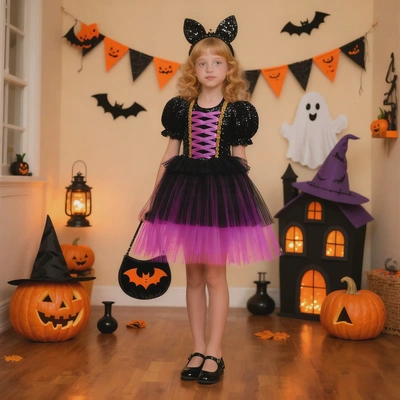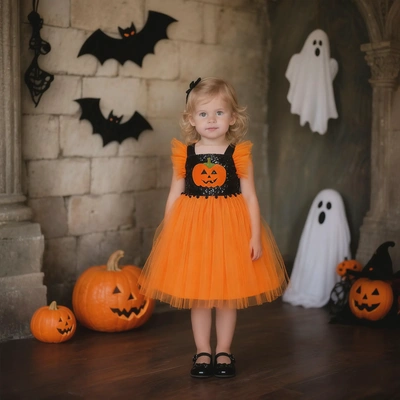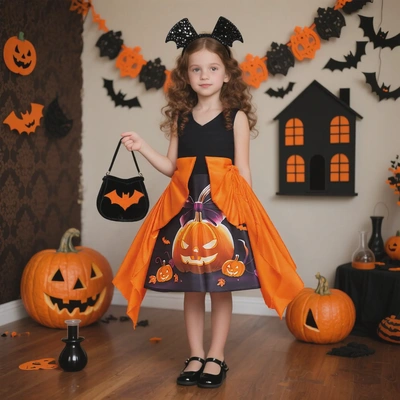Light-Up vs. Regular Princess Dresses: The Ultimate Safety Guide for Parents
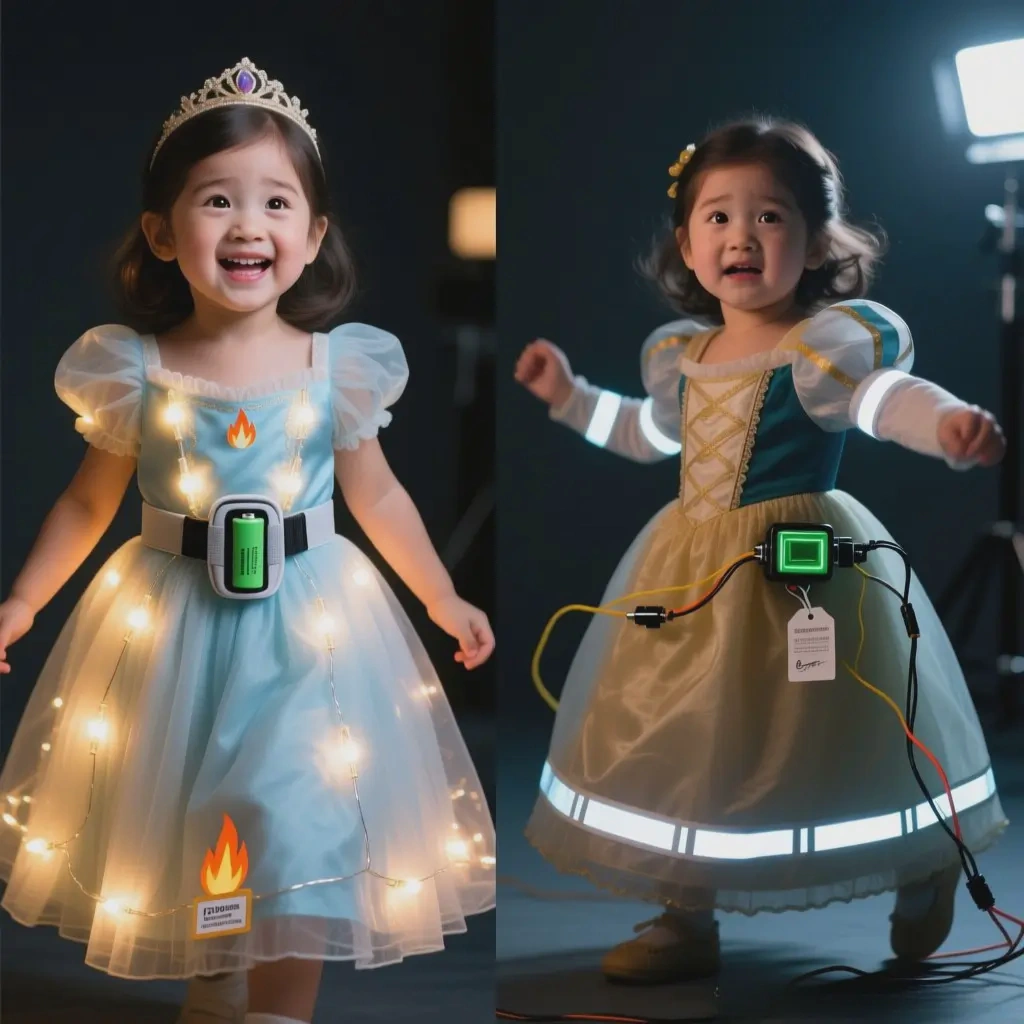
Every parent wants their child to feel like royalty, but when choosing between a dazzling light-up princess dress and a classic gown, safety concerns often take center stage. This comprehensive guide cuts through the sparkle to deliver a data-driven comparison of these popular costume choices, helping you make an informed decision that prioritizes your child's well-being.
We analyze light-up and regular princess dresses across critical safety categories, including material safety, visibility, choking hazards, and real-world performance. Discover which option offers superior protection for different scenarios and learn essential safety modifications.
Understanding the specific safety profiles of each dress type requires examining multiple factors. Let's explore the key considerations that should guide your purchasing decision.
Why Material Safety Matters More Than Sparkle
How Do Electronics Impact Safety?
Which Performs Better in Real-World Conditions?
How to Make the Safest Choice for Your Child?
Why Material Safety Matters More Than Sparkle
The foundation of costume safety begins with the materials themselves. Both light-up and regular princess dresses present unique material considerations that directly impact your child's safety and comfort.
From fabric composition to decorative elements, understanding material safety helps prevent skin irritation, allergic reactions, and other physical hazards.
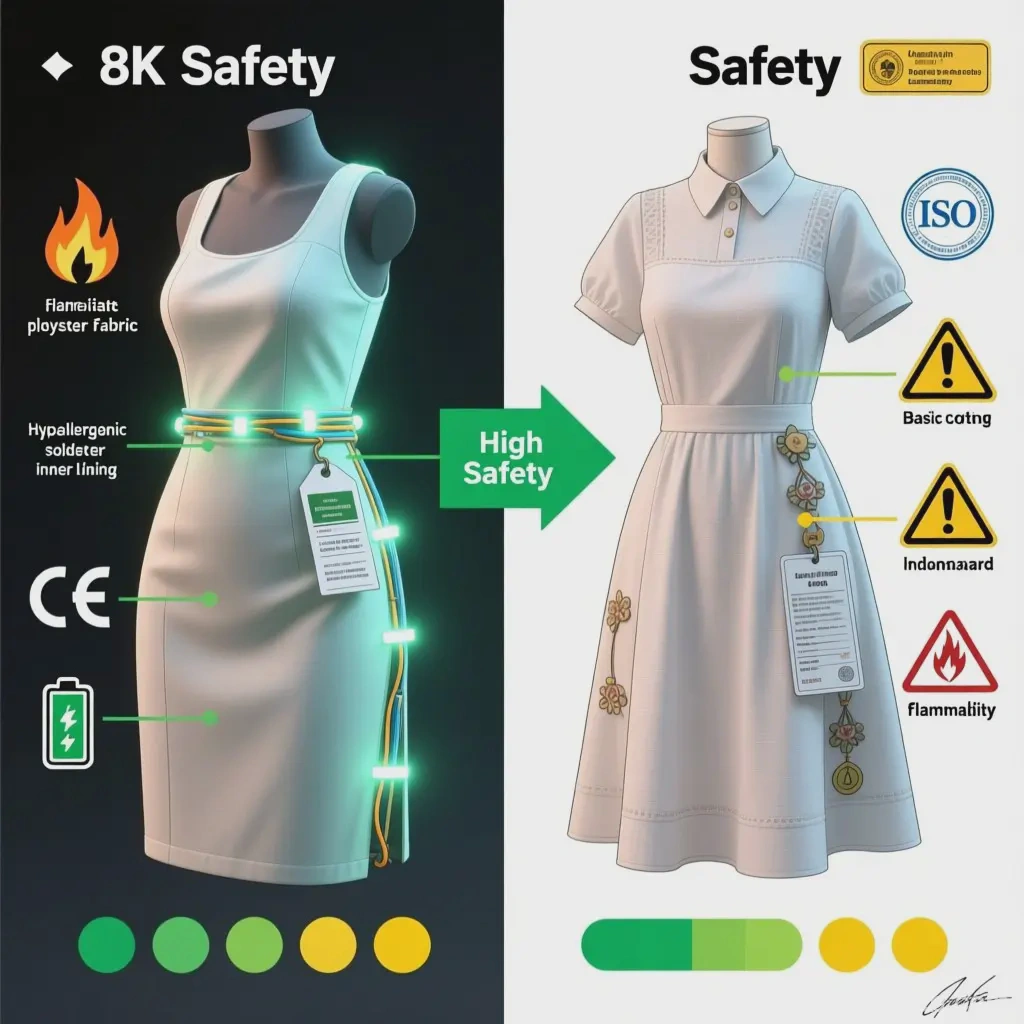
Material safety encompasses several critical aspects. According to the American Academy of Dermatology, costume materials should be breathable and free from known irritants. Regular gowns often use polyester blends that must be properly treated for flame resistance, while light-up dresses require additional scrutiny of their electronic components' housing materials. The U.S. Consumer Product Safety Commission mandates that all children's costumes meet specific flammability standards, but additional considerations like lead content in dyes and the security of attached decorations often separate quality manufacturers from budget options. Parents should look for OEKO-TEX or CPSC certifications that verify material safety beyond basic requirements.
How Do Electronics Impact Safety?
The integration of electronic components in light-up dresses introduces unique safety considerations that don't apply to traditional gowns. Understanding these factors is crucial for assessing overall risk.
Battery safety, wiring integrity, and heat management represent the primary electronic safety concerns that require careful evaluation.
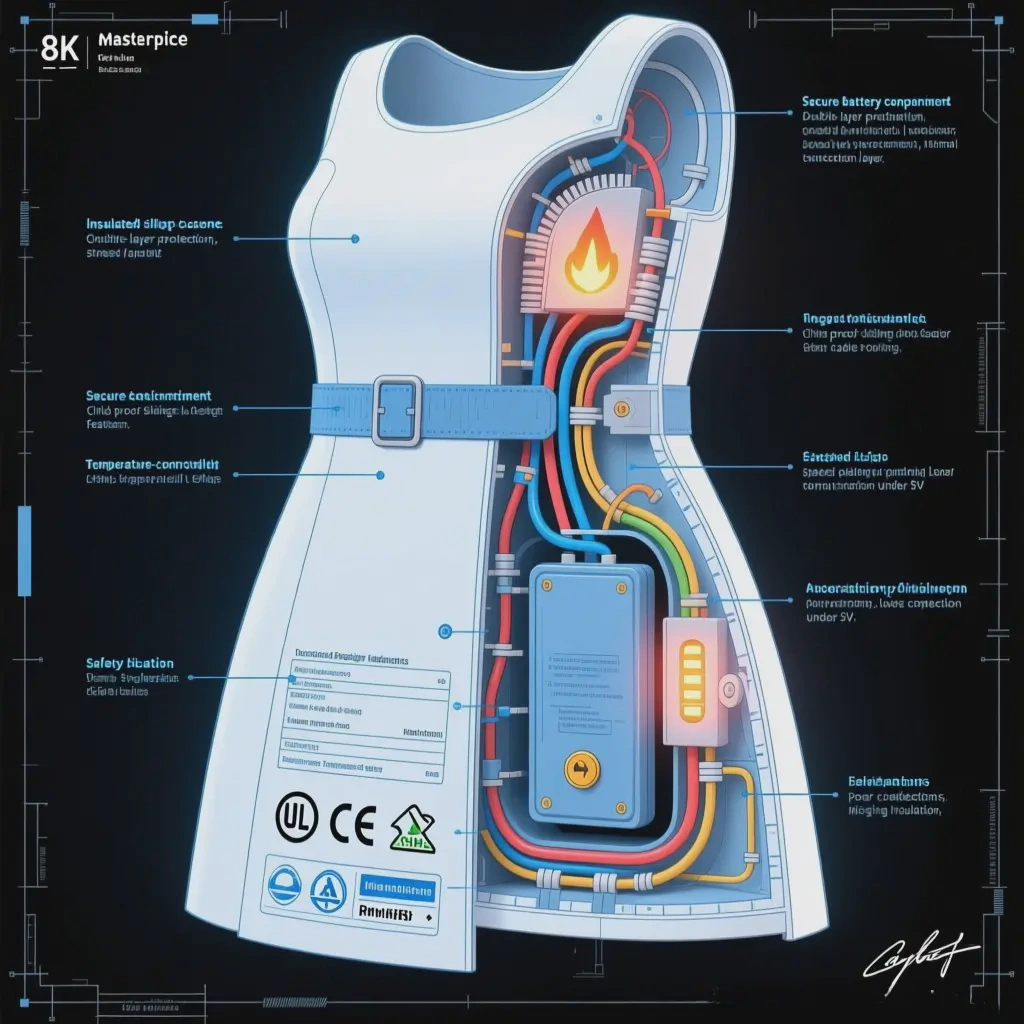
Electronic safety breaks down into three key areas:
Power Sources: Button battery compartments must comply with child-safety standards requiring tool access, as these small batteries pose severe choking and chemical burn risks if swallowed
Circuit Safety: Wiring should be fully insulated and routed away from areas of friction or potential snagging
Heat Management: LEDs should operate at surface temperatures below 45°C (113°F) to prevent burns
The Consumer Product Safety Commission reports that battery-related incidents in children's products have increased by 30% in the past three years, making proper battery compartment security non-negotiable. Look for dresses with UL-certified electrical components and independent safety testing verification.
Which Performs Better in Real-World Conditions?
Theoretical safety features must translate to practical protection during actual use. How these dresses perform in real-world scenarios often determines their true safety value.
Visibility, mobility, and durability under active conditions reveal critical safety differences between the two dress types.
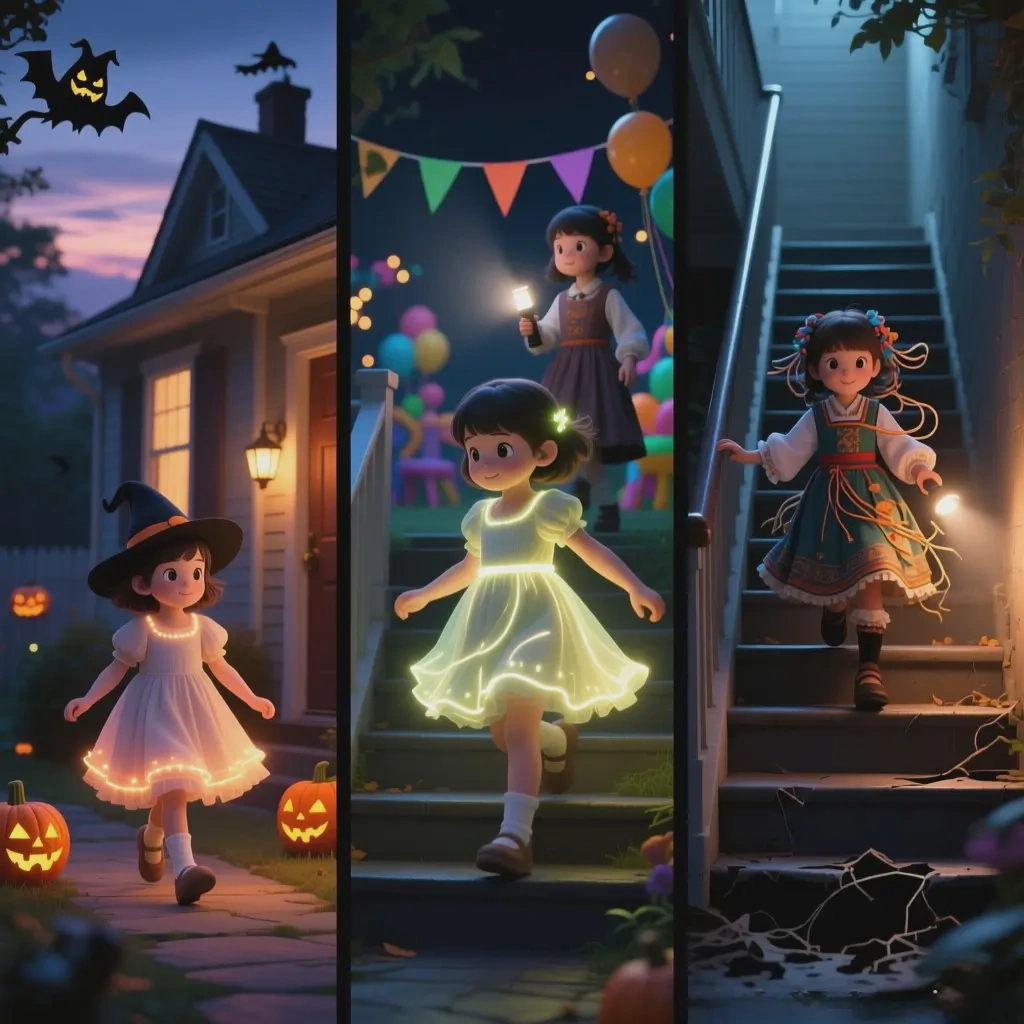
Real-world performance varies significantly by scenario:
Visibility Analysis:
Light-up dresses provide inherent visibility advantages, making children detectable by drivers at distances up to 3 times greater than those wearing dark-colored regular gowns. A study by the National Safety Council found that improved visibility can reduce pedestrian accidents by up to 47% in low-light conditions.
Mobility Assessment:
Regular gowns typically offer superior freedom of movement but often require length adjustments to prevent tripping, which accounts for approximately 82% of costume-related injuries according to CPSC data.
Durability Considerations:
Both dress types must withstand active play, but light-up dresses require additional protection for their electronic components against impact and moisture exposure.
How to Make the Safest Choice for Your Child?
Selecting the safest option requires matching dress features to your child's specific needs, activities, and environment. The optimal choice varies based on multiple individual factors.
A decision matrix considering age, activity type, and time of use helps identify the most appropriate and safe costume selection.
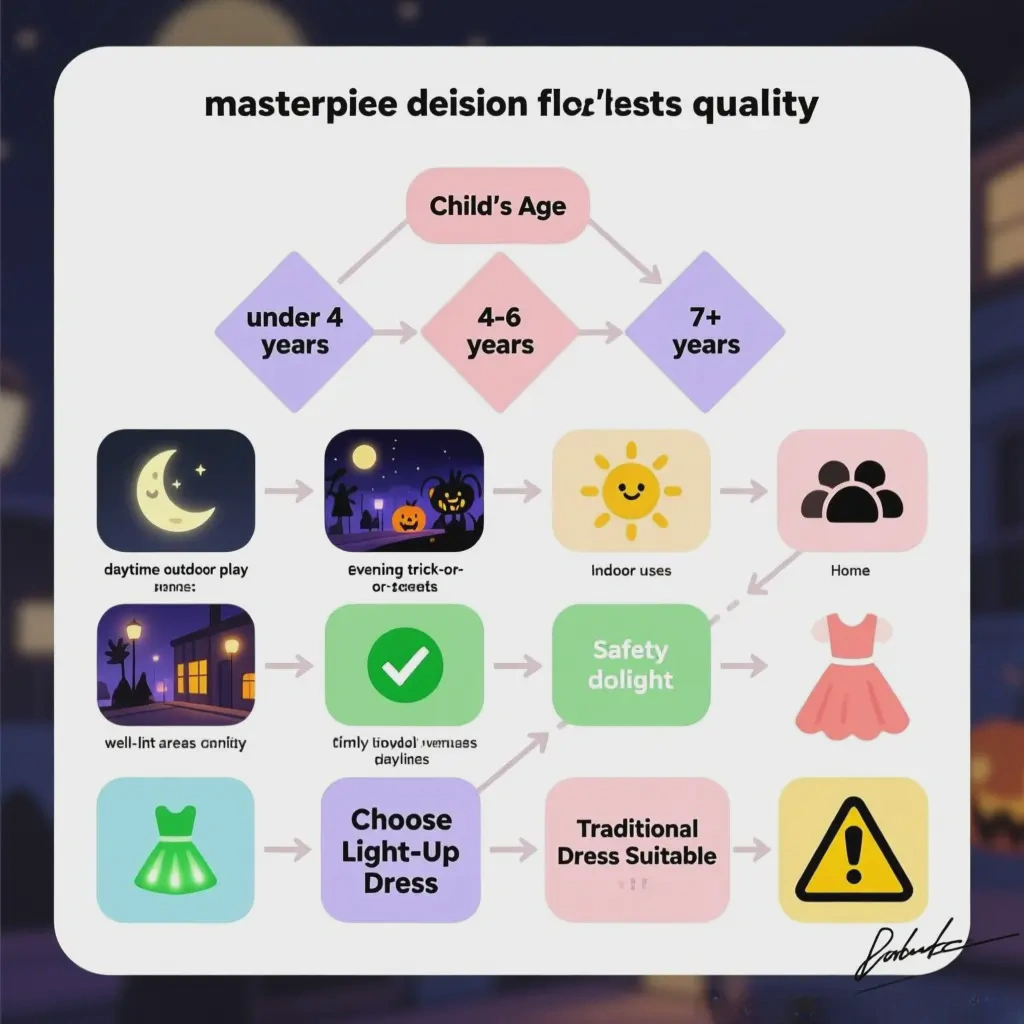
Implement this decision framework for optimal safety:
Choose Light-Up When:
Activities occur primarily in low-light conditions
The child is old enough to understand electronics safety (typically 5+)
The dress has certified safety standards (UL, CE, or CPC marks)
Battery compartments are securely locked and insulated
Choose Regular When:
Events occur in daylight or well-lit areas
The child has high activity levels requiring maximum mobility
There are concerns about sensory sensitivity to electronics
You can implement visibility enhancements like reflective tape
Essential Safety Enhancements:
Add reflective elements to regular gowns for nighttime visibility
Hem dresses to the appropriate length to prevent tripping
Conduct pre-use safety checks for loose components
Establish clear rules about costume use and care
The safety comparison between light-up and regular princess dresses reveals that neither option is universally superior—each presents distinct advantages tailored to different circumstances. Light-up dresses offer unparalleled visibility and modern safety features, but require diligent attention to their electronic components. Regular gowns provide traditional comfort and freedom but need proactive modifications for optimal safety. The most informed approach combines careful product selection based on verified safety certifications with practical modifications suited to your child's specific needs and activities. By prioritizing documented safety standards and implementing appropriate enhancements, parents can ensure their child's magical experience remains both joyful and secure.
[External links recommendation]
Halloween & Costume Safety: Tips for Trick-or-Treaters
Safety Tips for a Frightfully Fun Halloween
Halloween Health & Safety Tips

